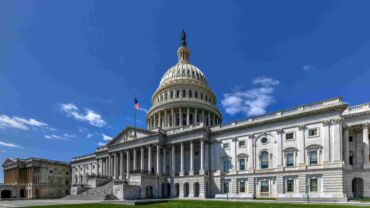Howard Jarvis Taxpayers Ass’n v. Cal. Secure Choice Ret. Sav. Program, 2019 WL 1430113 (E.D. Cal. 2019)
Available at https://www.govinfo.gov/content/pkg/USCOURTS-caed-2_18-cv-01584/pdf/USCOURTS-caed-2_18-cv-01584-1.pdf
A federal trial court has dismissed a challenge to the California Secure Choice Retirement Savings Program (CalSavers), finding that CalSavers is not preempted by ERISA. CalSavers is a state-sponsored program that will require eligible employers with five or more employees to automatically enroll their California employees and remit enrolled employees’ payroll deductions to state-administered IRAs if the employer does not offer a tax-qualified retirement savings program. Employees can opt out of CalSavers or change their contributions from the default 5%, subject to applicable IRA limits. CalSavers is currently being operated as a pilot project, but a three-year phased rollout of the program will begin in 2019. (Contributions initially will be limited to Roth IRA contributions, but traditional IRAs will also be offered, allowing individuals with higher incomes to participate.) The lawsuit was brought by a taxpayer group and two individuals, who claimed that CalSavers is preempted by ERISA—meaning that employers subject to ERISA need not comply with the mandate—because its automatic enrollment feature prevents the program from qualifying for a 1975 regulatory safe harbor for payroll-deduction IRA plans that are “completely voluntary.”
The court acknowledged that the DOL’s preamble to 2016 regulations expanding the safe harbor provisions interpreted the “completely voluntary” requirement to preclude automatic enrollment arrangements (like CalSavers) from qualifying for the 1975 safe harbor, even if employees could opt out of the arrangement. But Congress repealed those regulations (along with their preamble) in 2017, making it difficult to determine Congress’s intent regarding the “completely voluntary” requirement. Nevertheless, the court decided that, based on the record as a whole, CalSavers did not qualify for the 1975 safe harbor. However, that conclusion did not mean that CalSavers was subject to ERISA. The court noted that no ERISA plans are governed or interfered with by CalSavers because CalSavers applies only to employers without existing retirement plans, and that CalSavers imposes only ministerial duties that are beyond what Congress intended to regulate in ERISA. The court also stated that previous government mandate cases (including the Golden Gate case (see our Checkpoint article)) tended to show that mandates are not preempted if they do not “force employers to create or alter ERISA plans.” The court declined to apply to a government mandate the test used to determine the presence of an ERISA plan articulated by the Eleventh Circuit in Donovan v. Dillingham, 688 F.2d 1367 (11th Cir. 1982). Observing that CalSavers does not govern a central matter of an ERISA plan’s administration or interfere with nationally uniform plan administration, the court concluded that it would be “out-of-step” with ERISA’s purposes to preempt CalSavers. On that basis, the claims were dismissed, although the claimants were given one last chance to amend their complaint.
EBIA Comment: The automatic IRA enrollment approach taken by CalSavers (and by several other states) is only one of several designs that states are using to help workers save for retirement. Some of those state programs facilitate the adoption of ERISA plans, and a DOL interpretive bulletin regarding three ERISA-based approaches—state-administered prototype plans, marketplace programs, and state-administered multiple employer plans—remains in effect (see our Checkpoint article). The success of the auto-IRA approach, however, depends on avoiding ERISA preemption. For that reason, this case will be watched closely. For more information, see EBIA’s ERISA Compliance for Health & Welfare Plans manual at Sections VI.C (“Is the Plan, Fund, or Program Established or Maintained by an Employer?”) and XXXIX (“ERISA Preemption of State Laws”). See also EBIA’s 401(k) Plans manual at Section II.B.4 (“Plans Sponsored or Facilitated by States”).
Contributing Editors: EBIA Staff.







